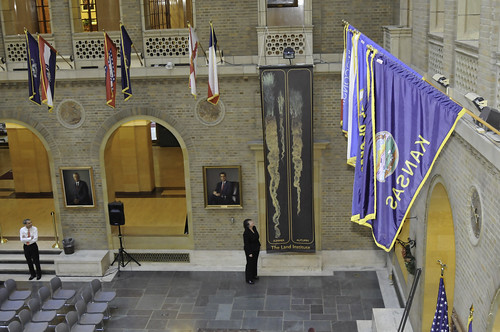
President Obama stressed the importance of innovation in his State of the Union address – and reminded us, “We do big things.” Wes Jackson, who lent USDA the banner pictured here, founded The Land Institute around the “big idea” of using nature as a model for agriculture, including perennial grain crops whose deep roots hold soil in place and take up water and nutrients year-round, rather than the more typical annual grains that produce a big harvest and then die each year. But perennial grains generally lack big seeds and high yields, and it has been difficult to breed grains that are both perennial and high-yielding.
Recently three scientists from USDA’s Agricultural Research Service (ARS) – Ed Buckler, James Holland, and Brent Hulke – joined colleagues from The Land Institute, several U.S. universities, Australia and China on a paper in the prestigious journal Science summarizing the potential benefits of perennial grains to global food security and the environment and explaining how recent advances in crop breeding may speed progress toward this challenging goal. ARS funding for research on perennial grains is modest, but some new directions are aimed at understanding the genetic basis of perennialism and developing genetic resources to breed perennial grains. For example, Buckler’s lab is working to identify novel genes in eastern gamagrass, a perennial relative of corn. Holland is starting to design a breeding scheme to intercross corn and teosinte, another perennial relative. ARS scientists in Nebraska are looking into other perennial grasses. Hulke is evaluating perennials in the USDA sunflower germplasm collection for disease resistance and agronomic traits that could be bred into cultivated sunflowers.
Other scientists have tapped grant programs of our National Institute of Food and Agriculture for some of their work on perennial grains, including research plots and on-farm trials of perennial wheat varieties at Washington State and Michigan State universities, testing at Iowa State of the perennial legume Illinois bundleflower, and some of The Land Institute’s work on intermediate wheatgrass. A National Research Council report described perennial grains as a potentially “transformative” approach to advancing sustainability, but cautioned that it could take 20 years to develop varieties suitable for widespread planting. Considering how long we have been improving annual crops, that actually doesn’t sound so long!
